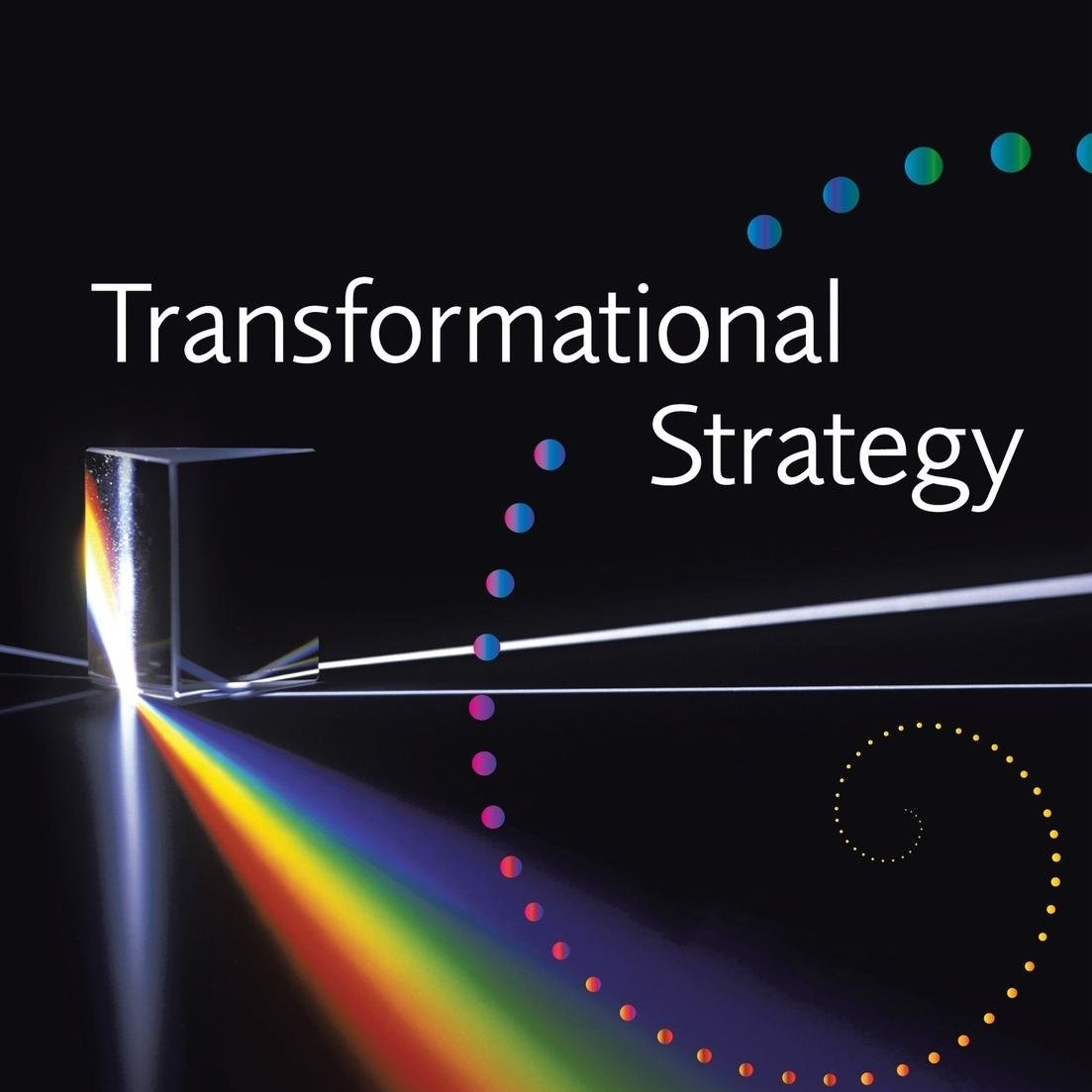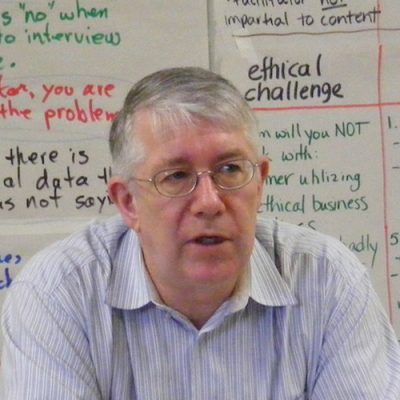Key Takeaways:
- Conventional strategic planning can cause disconnects between the people making decisions and the employees who have to implement them, which can cause issues around motivation, implementation, or even missed opportunities
- Organizations need plans that will be implemented, and people are more likely to implement plans they create for themselves
- Co-created strategic plans can provide a new understanding of existing daily operational challenges, or those that may be created when a new strategic plan is implemented.
A lot changed during the COVID-19 pandemic, forcing businesses to face organizational transformation. One significant shift we saw was how businesses make decisions.
As strategic planning consultants at ICA Associates Inc., we encourage our clients to shift towards participatory strategic planning, which involves including all stakeholders in the decision-making process.
The reason is simple: Organizations need plans that will be implemented, and people are more likely to implement plans they create for themselves. If you open up decision-making to more participants, you are more likely to see changes implemented.
In this article:
- What’s wrong with conventional strategic planning?
- How co-creation increases stakeholder engagement
- Benefits of Participatory Strategic Plans
- Who needs to be involved in strategic planning?
- The Participatory Strategic Planning Process
- Strategies for designing a successful strategic planning process
“Organizations need plans that will be implemented, and people are more likely to implement plans they create for themselves.” – Bill Staples
What’s Wrong With Conventional Strategic Planning?
In his book called The Rise and Fall of Strategic Planning, Henry Mintzberg underlined the difference between thinking strategically versus planning. One is exclusive to the other. You need both but they are different organizational functions.
In ICA’s development of a participatory approach to strategic planning, we have always been clear that the facilitator designs a process to model how humans think strategically followed by implementation planning that is dynamic/adaptive, and humane.
During Strategic planning, leaders define their vision for their organization’s future, creating strategies and setting goals and objectives. It often includes prioritizing goals and determining how the company can best reach that overall vision.
Conventional strategic planning typically involves a few executives sitting in a room together to make key decisions, but that’s no longer the best approach.
It can cause a disconnect between the people making decisions and the employees who have to implement them, which can cause issues around motivation, implementation, or even missed opportunities.
Multiple studies have shown that most strategic plans fail to be implemented. Some data estimates that 60-90% of strategic plans never fully launch.
This may happen due to a lack of stakeholder engagement, a failure to truly understand the problems they’re trying to resolve, or the reality that additional challenges are created by the strategic plan which are difficult to overcome.
More organizations are now incorporating participation and co-creation into strategic planning, including all stakeholders in the decision-making process. This is called participatory strategic planning.
How Co-Creation Increases Stakeholder Engagement
Participatory strategic planning is strategic planning that involves additional stakeholders, often including staff and executives alike.
Instead of executives having closed-door meetings to determine goals and implementation strategies before passing the objectives down through management teams, more stakeholders and even end-users are brought into the process.
Increasingly, we’re seeing companies bring the general population into the decision-making process to maximize stakeholder engagement and allow for extreme innovation to be brought to bear.
Involving stakeholders of all levels is a critical part of co-creation planning. You’ll generate diverse perspectives while uncovering systematic problems that may exist. It can provide executives with a new understanding of daily operational challenges that already exist, or those that may be created when a new strategic plan is implemented.
Executives, for example, may want to push sales team members to use smart devices like tablets to process customer purchases, because they feel it makes the company look tech-savvy and modern. In reality, a quick consultation with sales staff may reveal that the tablets are prone to technical issues that can cause delayed checkouts and frustrated customers.
When end-users and the people implementing the strategy help create it, they may identify potential bottlenecks or concerns that executives haven’t considered. They also feel agency in the strategic plan and understand why it’s important to the company’s overall goals, making them more engaged and motivated to contribute.
Benefits of Participatory Strategic Plans
Increased employee engagement and better executive understanding can help address potential shortcomings in strategies, all by incorporating diverse input and empowering workers to participate in the process.
There are three main advantages to the participatory approach to strategic planning that we use and teach here at ICA Inc.: Adaptable implementation, creative solutions, and truly strategic thinking.
In other words,
- Everyone understands the strategy’s intent and is motivated to follow through with implementation.
- Everyone has been part of the creation, so adaptation and flexibility is an option down the line if needed.
- If something goes wrong, people know how to resolve the issue, allowing for immediate problem-solving since they have a full understanding of the detailed plan due to having helped to create it.
Today, many workers have as much knowledge about the organization they work for as executives at the top. We’ve seen this time and time again while working as strategic planning consultants. These workers also are tuned in to what’s happening in society. You need their input if you want to get better plans.
Who should be Involved in Strategic Planning?
There are several key roles in the participatory strategic planning process:
- Strategic planning task forces. There may be strategic planning task forces who are given guidance by executives to organize the strategic planning process. They may schedule meetings, set agendas, recommend participants, and collect feedback from stakeholders, employees, or the public.
- Decision-makers. Ultimately, executives are likely to still be the decision-makers at the end of the process.
- Participating stakeholders. Stakeholders may participate by providing feedback throughout the strategic planning process. They may share thoughts, concerns, or ideas upfront, or they may be asked to provide feedback on an in-progress strategic plan before it’s finalized.
Many companies are increasingly working with consultants and facilitators like ICA as we can serve a core function in strategic planning. Our participation facilitators are true experts in participatory processes, including strategic planning.
ICA can help your team execute a strong participatory strategic planning process that drives actionable plans for implementation. Our clients don’t abandon our strategic plans; they’re always used to guide transformational work over three to five-year periods.
One of our clients, for example, calls every four years for a new plan after implementing at least 95% of the existing plan we’d developed with them. They’re doing the heavy lifting by implementing those changes, and we’re always ready to help with them with the next stage of business growth.
You can see more of our client stories here.
The Participatory Strategic Planning Process
The participatory strategic planning process includes the following steps:
Choose which stakeholders or employees should be involved. You may involve different stakeholders at different points of the process, but consider who will be attending the retreat and schedule it accordingly.
1. Do your research. Study and learn from what is going on in the company, its niche, and the world. There are participatory approaches to an environmental scan and trends analysis that yield rich insights because you can tap into the lived experiences of your staff, executives, customers, and suppliers. On top of that, it is far faster to collaborate on this stage than to just pay a researcher to do the work for you. Another thing to appreciate during the research phase is that: everything comes from somewhere and goes somewhere, so acknowledge and celebrate the previous efforts at moving the organization along. This prevents people from imagining that they are always starting from scratch. They are not. They are building upon previous accomplishments.
2. Hold a strategic planning retreat. Strategic planning retreats are incredibly important, and they involve bringing key decision-makers and participating stakeholders together for the strategic planning process. This is typically done in person to capitalize on innovation and feedback.
3. Define your strategic goals and prioritize them. Determine which specific strategic goals your business wants to accomplish in a three to five-year period. Prioritize these goals based on importance. You may also need to prioritize goals based on logical order; you may need to accomplish one goal in order to start on another.
4. Develop goals and KPIs to measure progress towards them. Set key performance indicators that will help you measure goal progress. Define who and how to monitor/track progress. The trick is not to track activity or get bogged down with technology, but still keep your eyes on results.
5. Create a strategic plan that details actions to reach specific goals. On the team level, action items for implementation are key at this stage, telling you “what” you’ll do, along with “when”, and “how” you’ll do it. Action plans are best when they are short-term: 90 to 100-day cycles are ideal. Longer term action plans tend to lag. Let the strategies keep everyone on track, that way, the action plans can be agile, responding to changing conditions.
6. Collect feedback. Request feedback from additional team members (or even the public) who weren’t consulted during the planning process. Consider their opinions and assess if the plan needs altering.
7. Formalize the plan. Create a documented approach for your strategic plan. While it may need changing over time, this is a firm starting point and you can begin implementation.
This process allows you to address both the key business vision and contradictions at the same time. This often helps stakeholders actually believe in the plan and find motivation to implement it. Your confidence in a plan, in spite of challenges or contradictions, will inspire others to believe in it as well.
Making Participatory Strategic Planning Accessible
Some people, including executives, are uneasy about strategic planning. The words and language come directly from the military, which may sound rigid and intimidating.
In some cases, a “rebranding” can help with this. The ICA process, for example, can be renamed to make it more motivational and palatable for your stakeholders. When working with an environmental group, for example, we used the name “Vision, Roadblocks, Pathways and Footsteps” to help stakeholders feel more comfortable and inspired.
What Does the Strategic Planning Process Look Like?
Stage One: Learn From Experience
ICAA has developed the tools to engage people in studying their past experiences, pulling out valuable lessons, and interpreting a range of trends affecting the direction of the organization. Done well and inclusively, this is often a transformational event for an organization even before they begin planning for the future because so much experience typically goes unacknowledged. Old wounds can begin healing. New participants get fully oriented. “The way we always do things around here,” can be let go of gradually.
Stage Two: Define a Practical Vision of the Future
A great strategic plan starts with a clear, practical vision of the future. Building consensus on a shared vision can inspire people and expose hidden agendas and intentions. After all, people will do what they intend to do whether it is in the plan or not.
A “practical vision” is not vague. It needs to be something stakeholders can see, understand, and believe in.
A vision is not a slogan. It’s a snapshot of what you want to see anywhere from five to ten years down the road. It needs to be far enough into the future that it is more than just a goal.
Stage Three: Address Your Underlying Contradictions
Your stakeholders must clearly understand any systemic blocks and constraints the organization faces to inform a highly leveraged strategy.
Identifying potential problems before they halt progress is essential. These contradictions can show the difference between what currently is, where you want to be in the future, and what needs to be resolved to accomplish your vision.
Stage Four: Develop Strategies and Strategic Directions that make a difference
The next stage is the strategy development itself. What makes it truly “strategic” is that these are actions that will make a real difference to the whole organization by dealing with the group’s contradictions and enabling their shared vision to emerge.
What makes it “transformational” is how each strategy influences the whole organization and is not attached to a single department. A set of strategies are still not goals and objectives. Strategies are categories of activities out of which shorter-term goals can be set by anyone in the organization: special strategy implementation teams and departments of the organization.
Stage Five: Implement
Finally, implementation is the fourth stage. This is when teams set short-term “SMART” goals for themselves, sketch out more detailed, realistic timelines of about 90 to 100 days, and assign themselves to take responsibility for tasks.
A successful implementation stage tracks the progress taking place. To stay on track, reconvene the teams on a fixed schedule to learn from experience and make a new set of short-term goals based upon the changing conditions.
Strategies to Design a Successful Strategic Plan
When leading organizational strategic planning sessions, consider the following strategies:
- Involving various departments can be invaluable. Work with all impacted departments to develop the most comprehensive strategic plan possible and best identify contradictions early in the process.
- Work with skilled facilitators. Strategic planning facilitators like ICA can ensure that your strategic planning sessions are well-executed and effective, giving you the end result of an actionable plan for implementation.
- Consider all feedback. Even during participatory strategic planning sessions, executives may sometimes be so focused on an end goal they fail to take all stakeholder feedback into consideration. Listen to all participants carefully.
- Prioritize goals strategically. Some goals may seem more exciting or important, but you need to accomplish different objectives first to make it to the end vision you have in mind.
Conclusion
We’ve seen it time and time again while working as a strategic planning facilitator in Ottawa:
Participatory strategic planning is the leading edge of all types of planning, and in a time of extreme change, transformational strategy is very necessary.
ICA has been developing and enhancing our process for over 40 years, with thousands of corporations, municipalities, cities, and organizations all over the world.
In Canada alone, we’ve helped a total of 301 organizations (and counting!) with strategic planning within board retreats for executives, staff, and multi-stakeholder groups.
We help train workers, team leaders, and execs on the best ways to influence and encourage the development of the best office culture.
Our workshops, webinars, and programs equip participants with the most cutting-edge techniques and know-how to transform your office and get the most out of every task. We’re ready to help you transform your decision-making and strategic planning processes next.
If you’re ready to revolutionize your organization’s decision-making process for the better, learn about our strategic planning consulting services or download a transformational strategy today.






